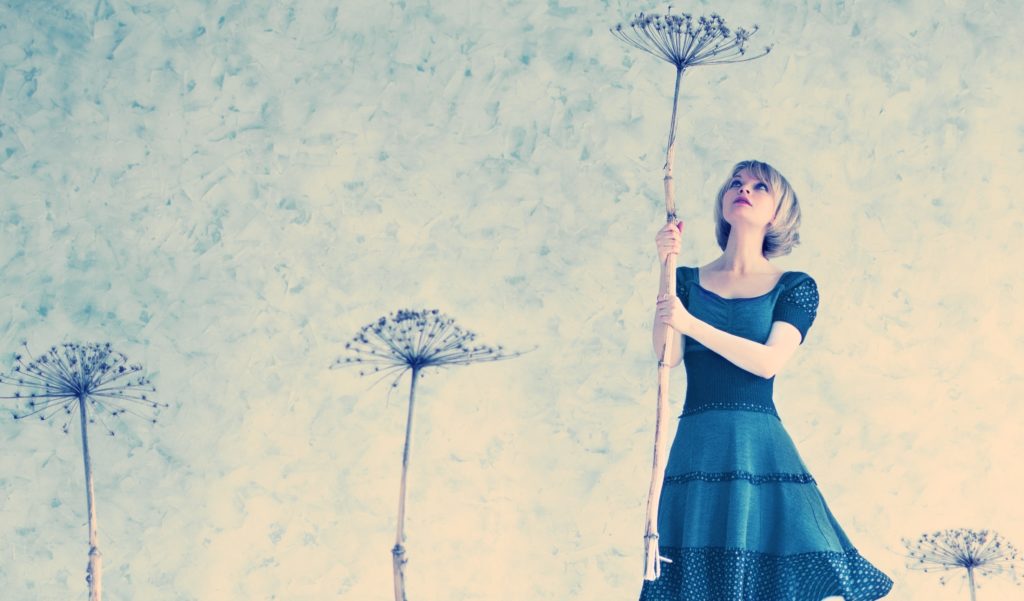In Ayurveda when the weather has turned cold and the leaves have dried and are blowing from the trees, we say we have now entered the Vata Season. “Vata” means “that which moves” and this season brings with it not only cold and windy days, but dryness, scattered minds and often depression. Before we look at how we can flourish in this season, let’s take a quick look back at what Ayurveda is and how it looks at the seasons of the year.

Ayurveda looks to nature as a way of explaining life. In fact the word “Ayurveda” means The Study of Life. (Ayur-life, Veda-the study of). Using nature as a guide, the Panchamaha bhutas or five elements are the foundation of this understanding. Ayurvedic philosophy believes the entire cosmos is an interplay of the energies of these five elements-Ether, Air, Fire, Water and Earth. Depending on the distribution of these elements within a specific space, determines whether you are a human or a tree or a rock. With each element comes gunas or attributes (energies). For instance Earth (Pruthivi) is cold, heavy, hard, and dense; Water (Apas) is cool, liquid, dull, soft, oily, and slimy; Fire (Agni) is hot, sharp, light, dry, and subtle; Air (Vayu) is mobile, dry, light, cold, rough, and subtle; and Space (Akasha) is clear, light, subtle, soft, and immeasurable.
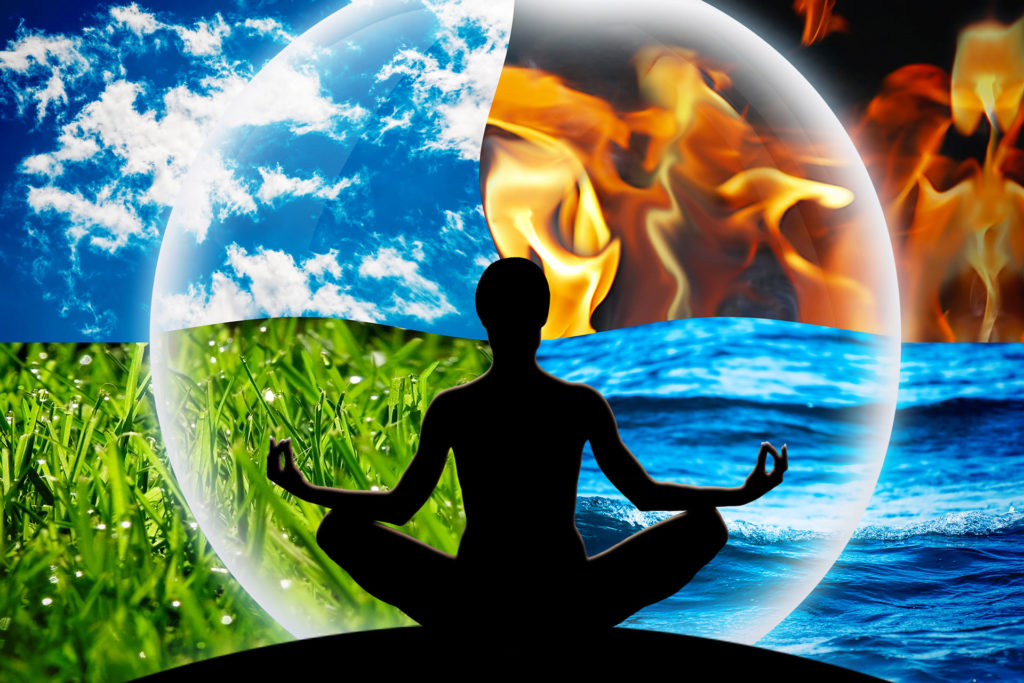
Ayurveda then groups the five elements into three basic types of energy or functional principles that are present in every body and every thing. There are no single words in the English language to describe these fundamental truths so we use the original Sanskrit language words: vata, pitta, and kapha. These are known as “the doshas”. Ether and air together constitute vata; fire and water, pitta; water and earth, kapha. Therefore the gunas or attributes of vata are those of air and ether (light, subtle, dry, mobile, rough and cold). The attributes associated to pitta would be the attributes of water and fire (hot, liquid, light, mobile, and penetrating). In kapha the attributes would be those of earth and water (liquid, heavy, cold, sticky and cloudy).
The rishis believed that man is a microcosm of the universe and therefore the five basic elements present in all matter also exist within each individual. The amount of space, air, fire, water and earth within the body determines what we will call our “constitution”. To learn about the Vata, Pitta, and Kapha constitutions, please read “Are you vata?“, “Are you pitta?“, and “Are you kapha?” Why is it important to know your constitution? It is important because your constitution is your true state of balance/health and knowing what your predominant energies are will help you stay healthy. So check out those articles and determine your constitution. It will help the rest of this article make more sense and also more valuable to you.

These five elements make up what Nyaya and Vaisheshika (two of the six Indian Philosophies) consider to be the first five of nine causative substances of the universe called nava karna dravya. The other four are: soul (atman), which is spirit or self; mind (manas); time (kala); and direction (dig). For this article we will look at Time (kala). Time is defined in Ayurveda as movement and change. Time is a force that can produce change and we use it as a marker for change. When we measure time, we measure change. So for instance the changes in the seasons bring forth different energies from the elements which are most predominant at that time of year. In fall/winter the energies are mostly cold, dry, mobile, rough, light and subtle; the same energies that correspond with Vata dosha.
Ayurveda, then takes this principle of nature and reflects it onto the times of the year to give us the seasons by looking at which elements are most dominant during a specific time. It is interesting to note that there were three distinct variations of elements during the year in the United States and six in India. These three seasons are loosely referred to as growing seasons (even through one of them is during a time when there is no growth in nature). Kapha Season is the season of earth and water and is what we consider our spring season, when new seedlings are planted (be it an actual plant or a seedling of thought, idea, or animal). Pitta season is the season of water and fire when the heat manifests and real growth takes place as well as harvest. Vata season is the season of air and space, the time of dormancy when the earth rekindles and prepares again for the seedlings of the next season. And much like the girl in the above picture, we may feel a little up in the air, trying to stay grounded.
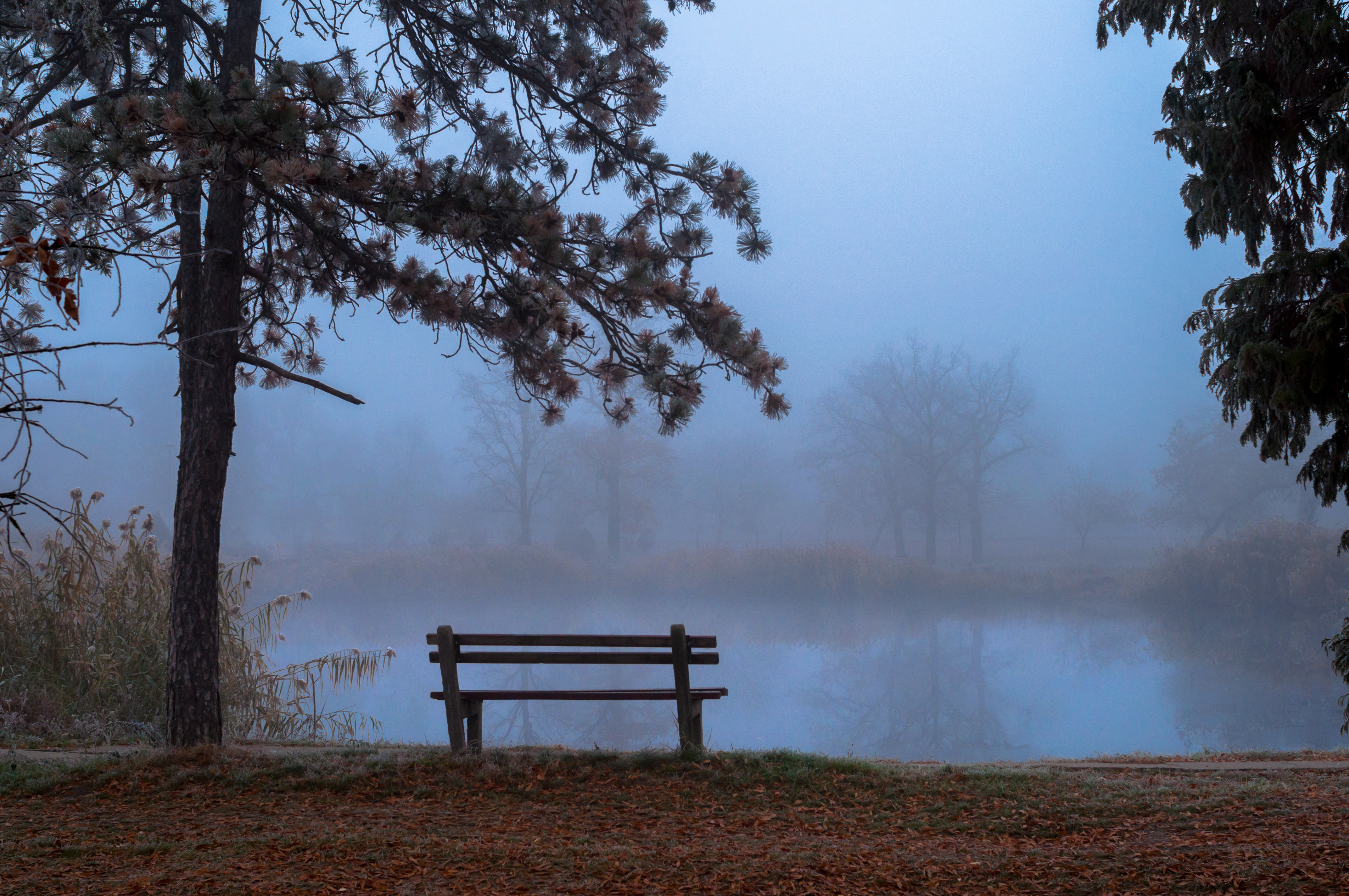
In Ayurveda there is a law which states that like increases like. When similar qualities come together, their quantitative expression increases. Therefore in the winter, when the attributes of vata increases in nature, vata will tend to be increased in the body and if you are of vata constitution, it may increase to an even greater degree. Remember vata is comprised of air and ether and they have the attributes of cold, dry, rough, light, subtle, mobile. What does this look like in nature and what does it look like in your body? First, the temperature is cold. The weather turns cold and therefore, the body if not to dress warm, would also be cold. It is dry, the leaves dry, there is less rain and if there is snow, it too may be dry. With this dryness in nature, our skin, eyes and mouth get dry. (It isn’t hot so we tend to drink less water as we have a lower amount of thirst and the body gets dryer). We may also experience constipation (dryness in the colon, gas, bloating, dry, hard stools). Vata season is light and we may lose weight or be of low body weight, have light interrupted sleep or have a hard time falling asleep. Another attribute is that it is rough, with so much dryness the land tends to be rough as does our skin and chapped and we may experience twitches, tics, tremors, and spasms. Another attribute is subtle, not much movement of the land, the grass stops growing, the trees are dormant, we want to be couch potatoes…it is too cold to go out and be active. And it is mobile, windy in nature and in our bodies we have a difficult time staying focused as our mind is scattered. We may have an excess of thinking and worrying, feel nervousness, anxiety, panic and fear.

When vata increases, our goal is to find a way through our lifestyle, food, exercise, Yoga, Meditation, herbals and treatments to reduce the excess. One of the best strategies is to continue your routine or dinacharya. Dinacharya’s consist of a morning and an evening routine. With many holidays at this time of year, it is often difficult to stay with your daily routines vowing to pick them back up at the beginning of the new year, only to find how much worse off you are both physically and mentally when you do this. To read more about Dinacharyas see: Dinacharya-Sticking With a Routine.

In the food category try eating warm, cooked foods, made with warming spices. This is the hardest time of year on our digestive systems, so help them out by creating more digestive juices. Drink 8 ounces of warm water with lemon 20 minutes before a meal and don’t drink any liquids during the meal. Stews, soups and chili’s are great choices as they are wet, cooked (pre-digested) and grounding. Vegetables that your Grandmother used to store in the cellar actually contain the majority of the nutrients your body needs this time of year. Vegetables like turnips, sweet potatoes, white and red potatoes, carrots, beets, horseradish, etc. will help keep these valuable vitamins and minerals available to your system.

This is the time of year to pick up the exercise. If you are not doing cardio vascular exercise you need to add it to your exercise regimen. Because we tend to spend more time inside this time of year, our bodies get stagnant. Cardiovascular exercise keeps the circulation moving and the kapha (weight gain) from settling in. Because the weather is cooler, this is also a time when the adrenal glands can take a break from the heat. So again, spend no more than a few minutes if any in the steam rooms, saunas and Jacuzzi’s. Same with hot yoga (fitness yoga), switch to Ashtanga or Vinyasa for an active class but one that is taught in a regular temperature room. Choose one where loud distracting music is not played. Remember Yoga is a healing art. Loud music and heat only add to the distraction and detriment of your body’s ability to balance and heal by stressing the sense organs and adrenals.
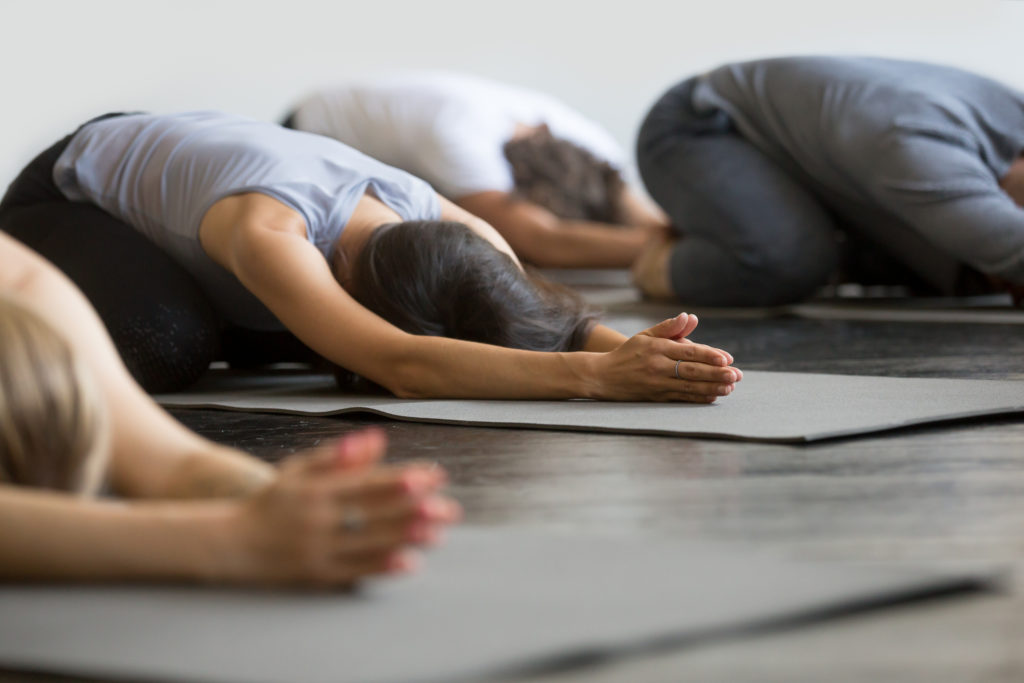
Yoga poses that help ground you during this season are Makarasana (crocodile pose), Balasana (child’s pose), Savasana (corpse pose), Sukasana (easy pose), Utkatasana (chair pose) and Viparita Karani (legs up the wall pose). Poses that help you strengthen are the standing poses of Virabhadrasana I and II (warrior I and II), Trikonasana (triangle pose), Parsvakonasana (side angle), and Parsvottanasana (pyramid pose).
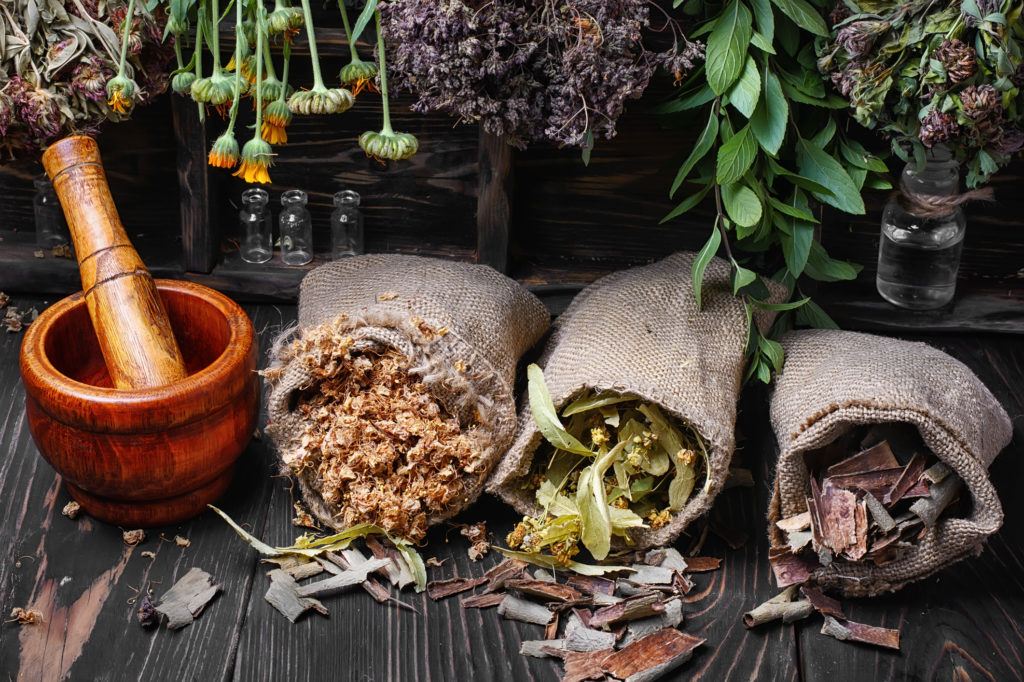
Herbal therapies become important at this time of year when fresh vegetables and fruits are not as available. There are many herbals that enhance your strength and durability. Talk to your Ayurveda Practitioner about what she may recommend in this area.
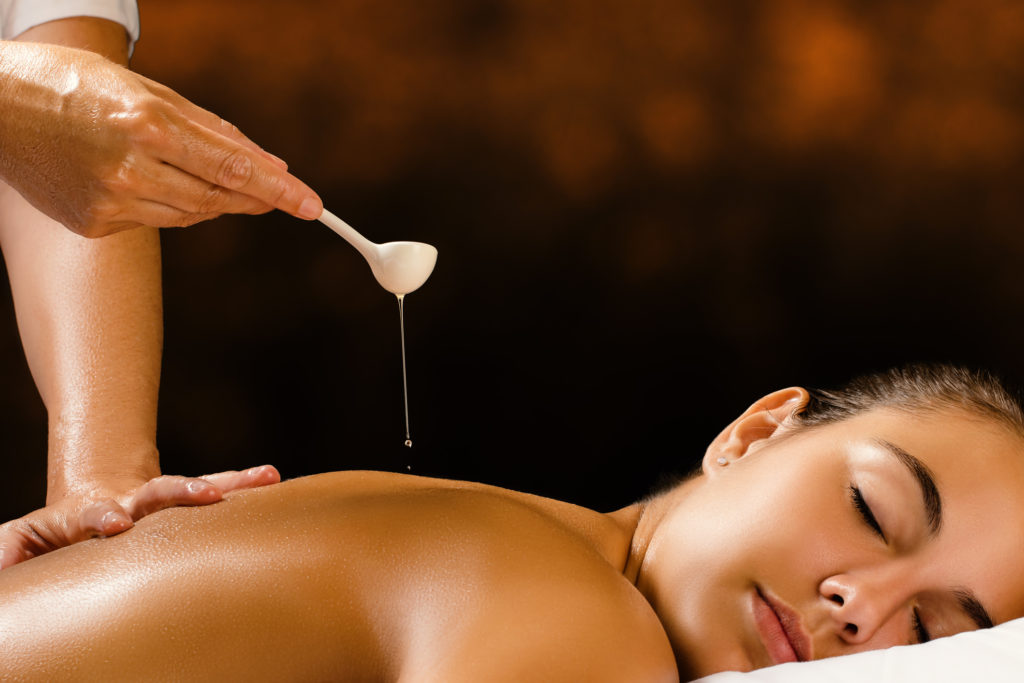
Therapies like abhyanga (oil massage) and shirodhara (the dropping of oil on the forehead) are wonderfully nourishing and balancing. Abhyanga can be done as self-massage or by a therapist, shirodhara needs a therapist to oversee the application. And of course basic Ayurveda practices of using the Neti Pot followed by applying Naysa Oil to the membranes in the nostrils should be done on a daily basis. Even warm milk baths are wonderful at this time of year, massaging with warm shea butter and jumping into your pajama’s to enjoy a warm cup of turmeric milk will always make you feel a little pampered and nurtured. Even the books you may choose to fall asleep reading should be nourishing and calming. Don’t forget to place a tissue with some lavender essential oil on it inside your pillow case. If you would like a personalized plan, please contact me for a consultation.
Staying nurtured and nourished will give you the energy to get to work in this season…much is to be done. It is time to re-evaluate your next evolvement, but first we need to see where we are and where we want to go. That is the subject of my next blog.
Talk to you soon, and thanks as always for reading. Please feel free to share with those that you know may enjoy and be inspired.
Peggy
.

